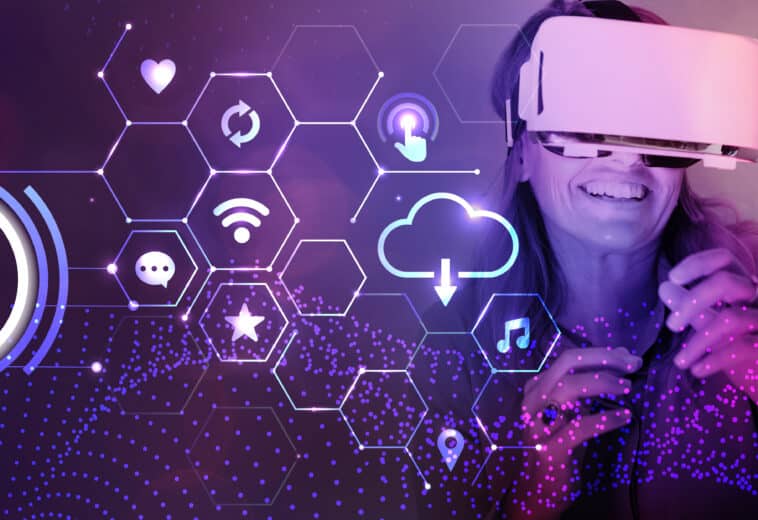Since the pandemic has emerged, there has been a big discussion about digital technologies and their importance in our lives. It is said that digital technologies can help us communicate better, work more efficiently, and even improve our health.
Digital technology has transformed how we live, work, and communicate. It connects us to a world of information and opportunities, helps us be more creative and efficient, and enables us to better manage our lives and relationships. Digital technology has also brought new challenges, including online safety risks and cyberbullying.
As we increasingly rely on digital technology in our everyday lives, it is important to ensure that we use it safely and responsibly. This means understanding the potential risks and taking steps to protect ourselves from them. It also means using digital technology in ways that respect the rights of others and do not cause harm.
What is Augmented Reality?
Augmented reality (AR) is a live direct or indirect view of a physical, real-world environment whose elements are “augmented” by computer-generated sensory input that enriches the user’s perception of the real world. This information typically includes sound, video, graphics, or GPS data.
It has been defined as “a collaborative experience in which computer-generated objects are integrated into the real environment so that humans can perceive them as real objects”.
This technology has been used extensively in gaming and entertainment applications but is also increasingly used in productivity, training, and educational applications.
The key advantage of AR over virtual reality (VR) is that it allow users to interact with the real world while still providing them with additional information that is unavailable to their unaided senses. This makes it an ideal technology for various applications, including gaming, entertainment, productivity, training and education.
The key challenges for AR are to provide users with an immersive experience that is both realistic and interactive and to do so in a way that does not detract from the user’s ability to interact with the real world.
Types of AR technology
There are three types of AR technology:
- Marker-based
- Superimposition-based
- Projection-based
Marker-based AR uses a physical marker to trigger the appearance of digital content. Superimposition-based AR aligns digital content with the real world without using a marker. Projection-based AR projects digital content onto surfaces in the real world.
Applications of Augmented Reality
There are several potential applications for augmented reality technology, including:
Retail
Customers could use AR to virtually try on clothes or test products before making a purchase.
Advertising and marketing
AR could be used to create interactive and immersive experiences that capture consumers’ attention.
Education and training
AR could be used to provide real-time feedback and guidance to students or employees during training sessions.
Healthcare
Doctors and surgeons could use AR to view patient data or medical images while performing procedures.
Gaming
AR could enhance the gaming experience by providing users with additional information or virtual objects within the game environment.
Navigation and mapping
AR could be used to provide turn-by-turn directions or display information about nearby landmarks and businesses.
Social networking
AR could be used to create virtual spaces where users can interact with each other in real-time.
Military and law enforcement
AR can also be used for training or information about potential threats in a given area.
Manufacturing and industrial
Score of AR is would extend to quality control or to provide workers with real-time information about their tasks.
Maintenance and repair
To display instructions or diagrams to workers while performing maintenance or repairs.
These are just a few potential applications for augmented reality technology. As the technology continues to develop, new and innovative applications will surely emerge.
Potential drawbacks of AR
Everything has pros and cons, but it depends on how we use it. It is the same with Augmented Reality (AR). AR can have some potential drawbacks, but overall it has more advantages than disadvantages.
Some potential drawbacks of AR include:
Over-reliance on technology
People might become too reliant on AR technology, leading to a decrease in face-to-face interaction, social skills, and creativity.
Distraction from the real world
If people use AR technology to escape from the real world, it could lead to them becoming more isolated and less engaged with the people and environment around them.
Privacy concerns
There are concerns that AR technology could collect personal data without the user’s knowledge or consent. This could violate an individual’s right to privacy.
Health hazards
Some research has suggested that health risks could be associated with exposure to the electromagnetic radiation emitted by AR devices. These risks are currently unproven, and more research is needed.
Overall, Augmented Reality has more advantages than disadvantages. It can change how we live, work, and interact with the world around us. Used correctly, it has the potential to improve our lives in many ways. However, like all technology, it has potential drawbacks that should be considered.
What is Virtual Reality
Virtual reality is a computer-generated environment that lets you experience a different place or situation. It’s created using software to generate realistic images, sounds, and other sensations that mimic a real environment or create an imaginary one.
You’re transported into this simulated world when you put on a headset and enter VR. You can explore it, interact with it and even change it. And all of this is done in real-time.
Types of VR technologies
There are two main types of VR systems:
- Tethered AR technology
- Standalone AR technology
A tethered VR system uses a computer or gaming console to generate the virtual world, experienced through a headset connected to the system.
A standalone VR system has everything built into the headset, so no additional equipment is required.
Applications of VR
VR has been used in a variety of ways, including:
- Video games
- Simulations ( flight simulators)
- Training (military or medical)
- Education (learning about new cultures or historical events)
- Therapy (treating conditions such as phobias or post-traumatic stress disorder)
- Entertainment (movies, concerts or theme parks)
Potential drawbacks of VR
There are a few potential drawbacks to virtual reality.
One is that it can be difficult to create realistic virtual environments. This can lead to a less immersive experience and make it more difficult for people to suspend their disbelief.
VR technology is still fairly new and thus can be expensive. Finally, some people may experience motion sickness or discomfort when using virtual reality headsets.
However, as technology improves, these drawbacks will likely lessen or even disappear completely. The benefits of virtual reality are vast and varied, making it an exciting and potentially transformative technology.
Endnotes
The future of AR VR is looking bright, with a lot of potential in many different industries. There are endless possibilities for how these technologies can be used and what they can do to improve our lives.
We are only just beginning to scratch the surface of what is possible with AR VR. In the future, we will see even more amazing and life-changing applications of these technologies.





